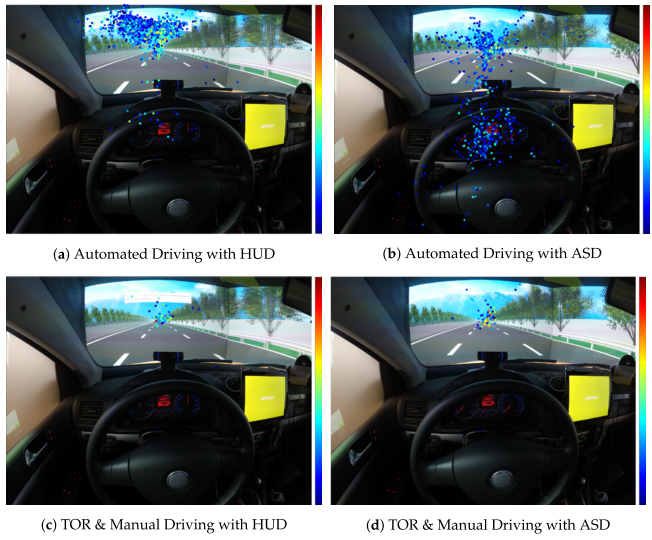Which display modality is more suitable for productivity in conditionally automated vehicles (SAE L3) ? That was the question we initially tried to answer in :
Schartmüller, C., Weigl, K., Wintersberger, P., Riener, A., & Steinhauser, M. (2019). Text Comprehension: Heads-Up vs. Auditory Displays: Implications for a Productive Work Environment in SAE Level 3 Automated Vehicles. In Proceedings of the 11th International Conference on Automotive User Interfaces and Interactive Vehicular Applications (pp. 342–354). New York, NY, USA: ACM. https://doi.org/10.1145/3342197.3344547
We got controversial results on how auditory speech displays are subjectively favored by users but heads-up display were actually more productive, with no significant differences regarding safety. To further investigate, we extended our experiment and dove deep into the most distinctive difference between the two displays: that of visual attention. What we found was a lasting effect beyond that of NDRT engagement during automated driving: people were also more distracted during take-over requests, after using a heads-up display – possibly because they had to spend more efforts in regaining situation awareness. Read more in our most recent open access publication:
Schartmüller, C., Weigl, K., Löcken, A., Wintersberger, P., Steinhauser, M., & Riener, A. (2021). Displays for Productive Non-Driving Related Tasks: Visual Behavior and Its Impact in Conditionally Automated Driving. Multimodal Technologies and Interaction, 5(4). https://doi.org/10.3390/mti5040021



